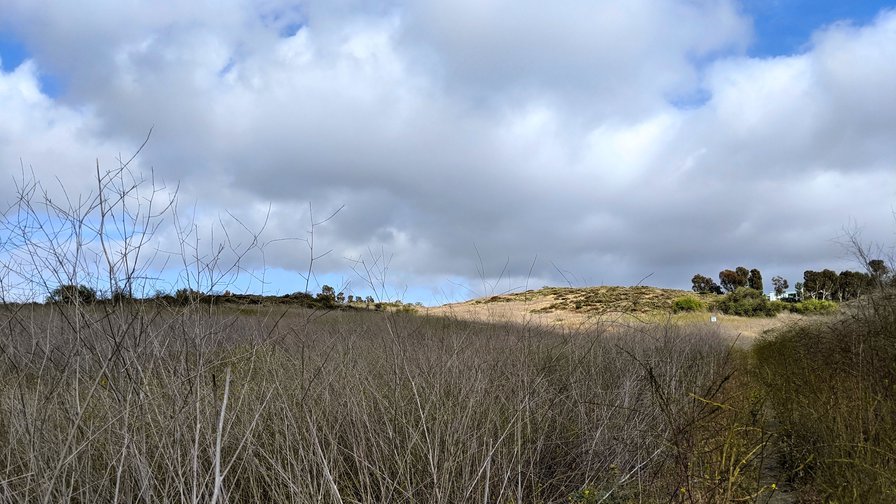Linkage
-
Ememem’s mosaic interventions in the potholes of Lyon (\(\mathbb{M}\), see also, and also). I find this kind of urban kintsugi pleasing, not just for its aspect of guerilla art, but for the sharp geometric patterns of the mosaics and the rough boundaries where they meet the landscape around them.
-
Tilings encyclopedia (\(\mathbb{M}\)). An online collection of many pretty substitution tilings. What’s missing to make it closer to OEIS in usefulness is a way to search by tiling rather than by keyword in the description of the tiling.
-
At UC Irvine, we’ve been using Piazza for online course forums, but Piazza insists on serving ads to students (despite being paid), so we’re moving to Ed Discussion instead (\(\mathbb{M}\)). You can see similar moves at Berkeley and Penn State. Usually I mistrust campus choices of software infrastructure — they tend to go for big crufty hard-to-use packages that are a poor fit for our needs — but this appears to be for good reason and I support it.
-
Quanta highlights one of my UCI colleagues, Asaf Ferber, for his work with Michael Krivelevich proving that every graph without isolated vertices has an induced subgraph of \(\Omega(n)\) vertices in which all vertices have odd degree (\(\mathbb{M}\)). As usual, they also get important details wrong, forgetting to mention that the subgraphs must be induced, and also not mentioning the requirement of no isolated vertices. For the actual preprint see arXiv:2009.05495.
-
Academic freedom dead at U. of North Carolina (\(\mathbb{M}\), via, see also): right-wing board of trustees cancel-cultures MacArthur and Pulitzer winner Nikole Hannah-Jones for racist/political reasons (they don’t want anyone to talk about US slavery and ongoing systemic racism). To be clear, she still has a position at UNC; after the trustees denied her tenure, her department gave her a five-year-renewable spot not requiring trustee approval.
-
Some mathematical news (\(\mathbb{M}\)). Gil Kalai rounds up a lot of recent developments in knot recognition complexity, exotic spheres, numbers of fixed points, graph theory, and additive combinatorics.
-
Tilted cavatappo surfaces (\(\mathbb{M}\)). Robert Jantzen studies the shape of corkscrew tube pasta and of shortest paths on its surface. See also his preprints arXiv:1301.0013 and arXiv:1402.3284.
-
Here’s an unexpected property of hyperbolic geometry (\(\mathbb{M}\)), or at least, it struck me as counterintuitive: all lines through two opposite quadrants of two perpendicular lines pass near their crossing, within distance \(\ln(1+\sqrt2)\). The figure below uses the upper halfplane model to show two quadrants (dark yellow), their convex hull (light yellow, from which the lines cannot escape), and a circle of radius \(\ln(1+\sqrt2)\) centered at the crossing, separating the quadrants.
-
At a time when national borders have largely shut down, significantly decreasing the opportunities for higher education for people with the misfortune to be born in the wrong part of the world, California’s legislators are pushing to enact the same barriers to education across state lines (\(\mathbb{M}\)), preventing access to education and hurting the state itself by discouraging the best and brightest from coming here.
-
Cellphone snapshot of the UC Irvine Ecological Preserve on a recent cloudy day (\(\mathbb{M}\)). The foreground is mostly mustard, of no particular ecological significance; the ecological part is the coastal sage scrub on the sunny hillside in the background.

-
Aperiodic tilings of the hyperbolic plane by convex polygons (\(\mathbb{M}\)), Margulis and Mozes, 1998. I knew about the binary tilings but not this, which gets aperiodicity differently: if a tile’s area isn’t a rational multiple of \(\pi\), it cannot be periodic. This works even for certain hyperbolic rhombi, with angles chosen so they can tile. The tilings can still have 1d symmetry. If some single tile avoids all symmetries, I don’t know about it.
-
Geometric tomography (\(\mathbb{M}\)). A nicely presented brief web survey of this subject, on the reconstruction of 3d shapes from 2d information (such as its brightness function, the areas of its perpendicular projections), by Richard J. Gardner based on his 1995 book of the same title.
-
Collusion rings threaten the integrity of computer science research (\(\mathbb{M}\)), Michael L. Littman, CACM. Relatedly: “huge organised fraud” in scientific journals, via Retraction Watch.
-
Five talks from CanaDAM 2021 introducing graph product structure theory and its applications (\(\mathbb{M}\)).
-
Big progress in classifying polyforms by their Heesch numbers, obtained by using a SAT solver in place of an ad-hoc backtracking search for tilings (\(\mathbb{M}\), via). See also Ed Pegg on an infinite set of polyforms with Heesch = 3.